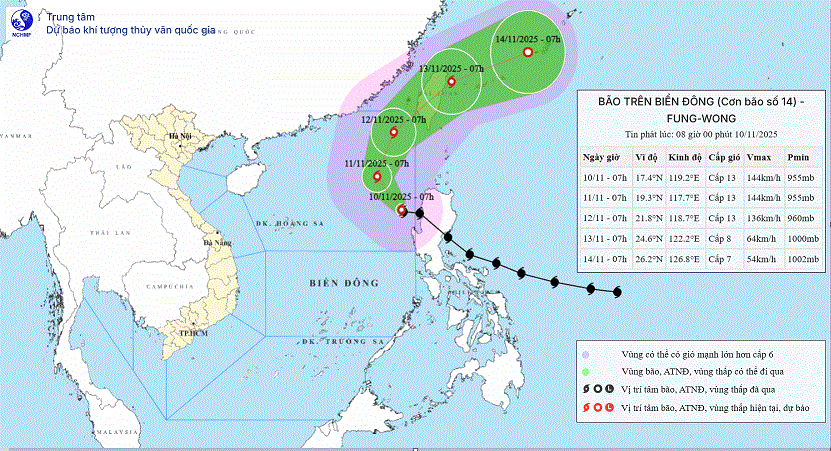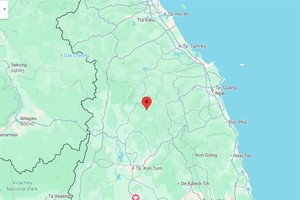Based on observational data from the meteorological–hydrological station network, during the night of November 20 and the early morning of November 21, the eastern area, from Quang Ngai to Dak Lak provinces, and the northern part of Khanh Hoa Province experienced moderate to heavy rainfall, with some places experiencing very heavy rainfall.
Several stations recorded high rainfall levels, such as Dak Lak’s Song Hinh 4 with 172 mm, Khanh Hoa Province’s Dai Lanh with 104 mm, and Khanh Hoa Province’s Hoa Son Reservoir with 102 mm.
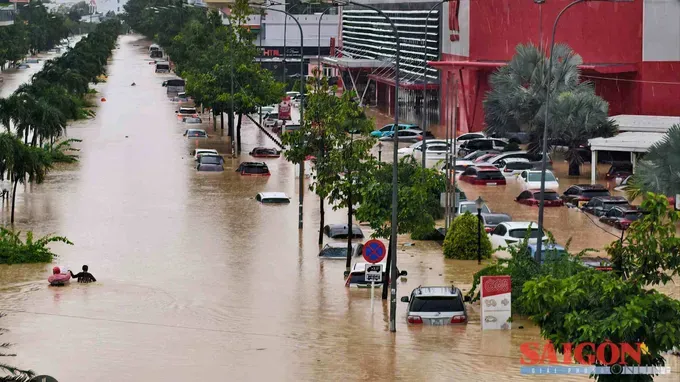
The meteorological and hydrological agency stated that, over the next 12 hours, flood level on the Ba River at Cung Son Station is expected to fall below alarm level 2, and Phu Lam Station will see it recede below alarm level 3. Meanwhile, flood levels on the Kon River will continue decreasing and remain below alarm level 2. In contrast, flood levels on the Krong Ana River will continue rising and stay above alarm level 3.
During the next 12–24 hours, flood levels on the Ba River at Cung Son Station will keep decreasing and recede below alarm level 1, while at Phu Lam Station, flood levels will remain above alarm level 2.
Flood levels on the Kon River will continue to drop and stay below alarm level 2; and flood levels on the Krong Ana River will still rise slowly and remain above alarm level 3.
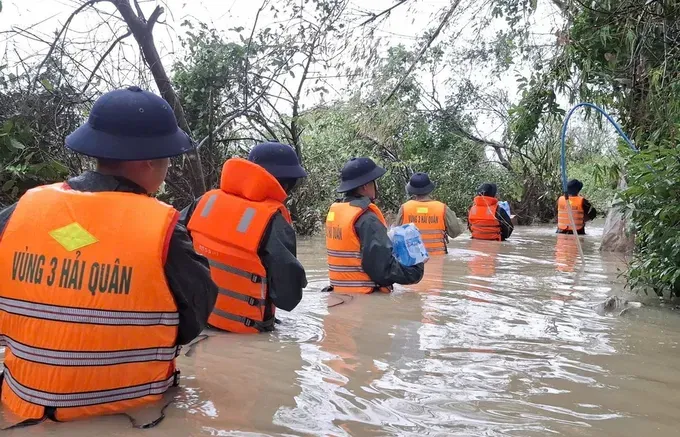
The National Center for Hydro-Meteorological Forecasting also assessed that over the next 24 hours in Khanh Hoa Province, flood levels on the Dinh River in Ninh Hoa will continue to reduce and remain between alarm levels 2 and 3; on the Cai River in Nha Trang and the Cai River in Phan Rang, flood levels will stay at or slightly above alarm level 1.
Flood levels on other rivers in Dak Lak Province will fluctuate between alarm levels 1 and 2. Flood levels on rivers in Hue City and Da Nang City will continue to recede and remain below or around alarm level 1.
Although floodwaters are trending downward after reaching their peak, the meteorological–hydrological agency reports that widespread flooding is still occurring in areas from Gia Lai to Khanh Hoa provinces. From Hue City to Khanh Hoa Province, there is a high risk of landslides.
Regarding the Dong Nai River basin, the National Center for Hydro-Meteorological Forecasting forecasts that in the next 6–12 hours, flood levels on the Dong Nai River will continue rising and fluctuate above alarm level 2. During the next 12–24 hours, flood levels on the Dong Nai River will keep fluctuating above alarm level 2, posing risks of flooding in low-lying areas along the river and landslides along riverbanks and streams within the Dong Nai basin in Dong Nai Province.
Rain persists, but intensity decreases
Regarding rainfall conditions, the National Center for Hydro-Meteorological Forecasting stated that throughout November 22, the eastern areas from Da Nang City to Dak Lak Province and the northern part of Khanh Hoa Province will see rainfall of 40–80 mm, with some places experiencing more than 150 mm.
On November 23, the eastern areas from Da Nang City to Gia Lai Province will see 30–60 mm of rain, with some places experiencing very heavy rainfall above 100 mm. From November 24 onward, heavy rain in the Central region is expected to decrease rapidly.

On November 21, Deputy Director of the National Center for Hydro-Meteorological Forecasting Hoang Phuc Lam informed that from the night of November 19 to the morning of November 20, several rivers in Dak Lak and Khanh Hoa province recorded water levels exceeding historic flood peaks from 1986, 1993 and 2009.
The prolonged rainfall from November 17 until now, combined with cold air and easterly wind disturbances, caused extreme rainfall in multiple areas, with stations such as Son Thanh Tay, Son Thanh Dong, Hoa My Tay, Son Long, Son Dinh and Song Hinh recording 1,000–1,200 mm of rainfall.
After November 21, rainfall and river levels in Dak Lak and Khanh Hoa provinces are expected to decrease, but widespread flooding will continue in Gia Lai, Dak Lak and Khanh Hoa. Heavy rain may shift northward, affecting Quang Ngai, Da Nang and Hue.
On the same day, the Ministry of Agriculture and Environment reported that several embassies and international organizations pledged about US$13.484 million in aid for areas hit by storms and flooding.
The same day, Quang Ninh Province provided VND5 billion (US$189,539) in support each to Gia Lai, Dak Lak and Khanh Hoa. Since August 2025, Quang Ninh Province has supported VND73 billion (US$2.8 million) to disaster-affected regions.
Recently, the Vietnam Disaster and Dyke Management Authority, together with the Department of Telecommunications and Zalo Vietnam, sent over 50 million SMS and Zalo messages to warn about disaster risks in the Central region.



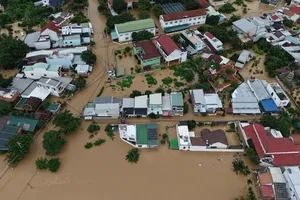


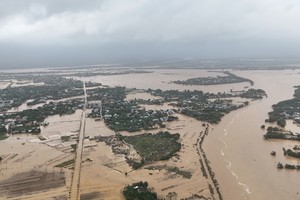

)

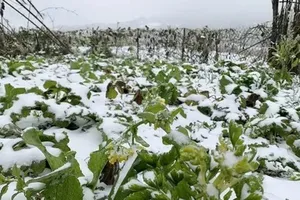
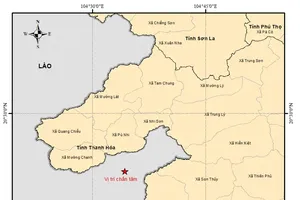


)

